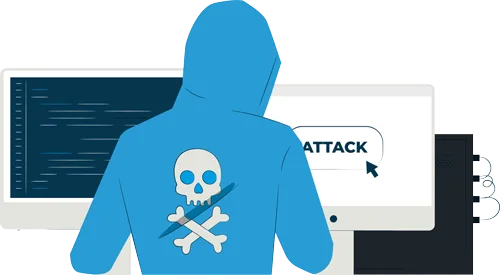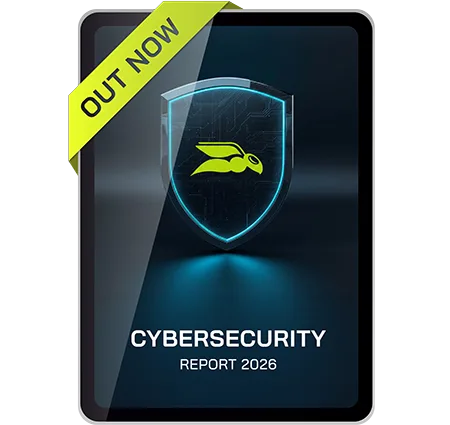

How to Decrypt Files Encrypted by Ransomware
The rise in ransomware within all industries is a call for real concern about what you need to do to prepare your organization for when you are a victim of such an attack. These malicious attacks can encrypt your valuable files, rendering them inaccessible, and require an expensive ransom for their release.
Not all is lost, the rise in ransomware bad actors also shows a rise in ransomware “white knights”. Our article will help you understand the impact of ransomware and what options there are for decrypting your files and recovering your data. Following these strategies and tips within this article will have you better equipped to mitigate the damage caused by ransomware.
How Ransomware Encryption Works
Ransomware encryption operates by using malicious software to encrypt files using an encryption algorithm and holding the decryption key as the ransom.
- Threat vectors: Ransomware often infiltrates the system through phishing emails, malicious software downloads, or exploiting vulnerabilities in existing installed software. Once these malicious programs are within your environment, they can cause havoc by spreading to other devices and encrypting data on other machines within the network.
- Encryption: The encryption process changes your documents into unreadable files, often also replacing the extension (.docx for example). The file formats and strange file extensions are usually the calling card for the type of ransomware which can help identify the method of decryption, if possible.
- Ransom: Ransomware leverages your local device to perform the encryption and sends the decryption key offsite via the internet to the attacker. The ransomware software usually will then present a ransom note demanding payment in exchange for the decryption key.
- Decryption? Without this key, it can be extremely difficult to regain access to the encrypted data, often leaving the data inaccessible, effectively holding your data hostage until payment is received. In some circumstances even Liam Neeson with his particular set of skills would find it difficult to find and recover the decryption key.

Ransomware Impact Report 2025
Ransomware attacks are increasing for the first time in 3 years, reaffirming its status as one of the most persistent threats to businesses in 2025.
Find out how organizations are adapting, what emerging trends are, and where new risks lie.
Real-world example: Ransomware attack targeting Kawasaki
A real-world example of the damage and impact this can have on a company was recently felt by Kawasaki Motors Europe. They suffered a ransomware attack across their company leading to service disruptions. The malicious group known as RansomHub, threatened to leak stolen data if the ransom was not paid.
On September 5, 2024, the group listed the company data on a dark web extortion portal, claiming they stole 487 GB of data from Kawasaki.
The importance of a backup plan
The Ransomware encryption process and recent examples above highlight the importance of robust cybersecurity measures and regular data backups to mitigate the impact of ransomware attacks. If you have backups of your data, you can restore your systems and get back in business, without having to pay the criminals.
Don’t underestimate the amount of work involved though, even if you have good backups that the attackers haven’t deleted or corrupted, restoring entire networks and servers is a big job, something most businesses have never tested at scale.
How to Identify Ransomware Strain and Its Symptoms
Identifying the specific strain of ransomware and recognizing its symptoms is crucial for effective response and mitigation. Here are some steps and indicators to help you identify ransomware strain and its symptoms:
- Ransom Note: One of the most obvious signs of a ransomware infection is the appearance of a ransom note. This note typically provides instructions on how to contact the attackers and pay the ransom and may include information about the type of ransomware used. The note can appear as a text file, an image, a webpage, or even a popup from the malicious software.
- File Extensions: Ransomware often changes the file extensions of encrypted files. For example, files may be renamed with extensions such as .locked, .encrypted, or specific extensions unique to the ransomware strain. Observing these extension types can help identify the ransomware type.
- Encryption Method: Different ransomware strains use various encryption methods. Analyzing the encryption algorithm (e.g., AES, RSA) used can provide clues about the ransomware strain. This information is often mentioned in the ransom note or can be determined through forensic analysis.
- System Behavior: Ransomware can cause unusual system behavior, such as:
- Slow performance or unresponsiveness.
- Inability to access certain files or applications.
- Frequent system crashes or restarts.
- Network Traffic: Monitoring network traffic can reveal suspicious activity associated with ransomware. Unusual outbound connections to known malicious IP addresses or domains are a clear indicator of infection within the organization. Having an EDR solution installed on all endpoints within your environment can effectively isolate suspicious hosts and slow the spread of malicious software.
- File Changes: Ransomware may modify or delete system files, logs, and backups. Check for unexpected changes in file sizes, timestamps, and locations. Especially very old dates such as within the 80’s or 1900’s, which is usually an impossibility.
- Security Alerts: Security software may generate alerts indicating the presence of ransomware. Pay attention to warnings from antivirus programs, intrusion detection systems, and other security tools. The use of a SIEM plus your EDR solution in combination with a SOC service is a great method to monitor and initiate a proactive response.
- User Reports: Users may report issues such as being unable to access files, seeing ransom notes, or experiencing unusual system behavior. Collecting and analyzing these reports can help identify the ransomware strain. Digital Employee Experience (DEX) solutions and Endpoint analysis solutions can help identify user reports to align with endpoint metrics.
By carefully examining these indicators, you can identify the specific ransomware strain and take appropriate actions to mitigate its impact. After identifying the ransomware strain, check if there is a known ransomware decryptor tool for it and follow your incident / ransomware response plan.
Free Ransomware Decryption Tools
Decrypting ransomware-encrypted files is a critical process that requires a combination of technical expertise, strategic planning, and timely action. By understanding the nature of ransomware, implementing a ransomware response plan, and being proactive with cyber security, the impact from ransomware can be drastically mitigated.
Below are some of the available free tools that can assist with decrypting ransomware in the event you are the victim of an attack:
- No More Ransom: A collaborative initiative by law enforcement and IT security companies to help victims of ransomware retrieve their encrypted data without having to pay the criminals.
- Kaspersky Rakhni Decryptor: A tool developed by Kaspersky Lab to decrypt files encrypted by various types of ransomware.
- Emsisoft Decryptors: Emsisoft provides several free decryption tools for different ransomware strains.
- Trend Micro Ransomware File Decryptor: A free tool by Trend Micro that can decrypt files encrypted by certain ransomware families.
- Avast Ransomware Decryption Tools: Avast has tools designed to decrypt ransomware for Microsoft Windows operating systems.
- AVG Tools: AVG has free decryption tools for different types of ransomware.
The key takeaway when dealing with ransomware is staying up to date on the information around the latest threats within the community. Ensure your action and response plans are regularly tested and updated along with mitigation strategies to safeguard valuable data.
Stay Ahead of Cyber Threats: Get Started Today!
Protect your business from ever-evolving cyber threats with Hornetsecurity’s Advanced Threat Protection. Stay ahead of attacks, safeguard your data, and ensure peace of mind. Request more information today and secure your email environment!

Conclusion
In the event you cannot decrypt the ransomware files, you would need to start the process of data recovery via the restoration of data using existing backups. Although we don’t want to be in that position, it is critical that your ransomware response plan along with your defense mechanisms are relevant.
To keep up with the latest articles and practices, visit our Hornetsecurity blog now.
FAQ
Decrypting files encrypted by ransomware can be challenging. Ransomware typically uses strong encryption algorithms, making it difficult to decrypt files without the decryption key held by the attacker.
Decrypting files from ransomware isn’t always straightforward. The first thing you want to do is identify the strain of ransomware to then determine if there is a ransomware decryptor tool available. If there isn’t a tool, then you may need to revert to data recovery methods.
Yes, it is possible to decrypt encrypted data. However, if there isn’t a tool already available to decrypt the data or you don’t have the decryption key/password, data recovery can be impossible. Encryption is a process that transforms data into a secure format to prevent unauthorized access, and decryption is the reverse process that converts encrypted data back to its original form.
Yes, there are some free ransomware decryption tools available, such as No More Ransom, Kaspersky RakhniDecryptor, Emsisoft Decryptor, and Trend Micro Ransomware File Decryptor. These tools can help in certain cases, but their effectiveness depends on the specific ransomware strain. It’s always important to have robust cybersecurity measures and regular data backups to mitigate the impact of ransomware attacks.


